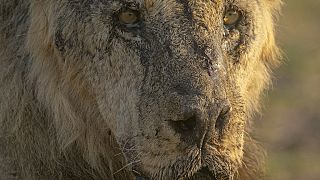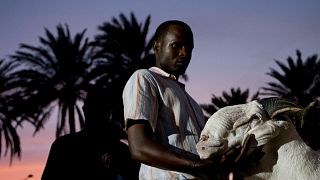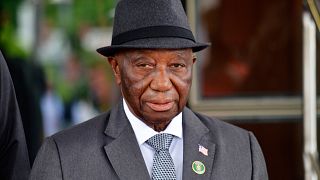Senegal
At three months old, even future kings of the savannah like to play.
In Senegal, a video of three cubs that would have hardly been imaginable a few years ago, has given hope that the revered West African lion, which has been decimated over time, will be revived.
The US-based wild cat conservation organisation Panthera has released never-before-seen images of a lioness and three cubs spotted in February by a remote cameras in the Niokolo-Koba National Park in southeastern Senegal.
In what Panthera describes as a "thrilling sign of recovery for the critically endangered West African lion", video footage shows the big cat eating an animal carcass while its three-month-old offspring try to imitate it.
They brandish their claws and fangs, testing them out on scraps of wood or their mother's hindquarters.
"This documentation of new lion life... indicates the remarkable recovery of a population on the brink of extinction", the organisation said in a statement.
Panthera has since 2011 been working with Senegal's Department of National Parks on conservation efforts in the Niokolo-Koba park.
In that time, the number of lions in the park has risen from 10 or 15 to around 30, the organisation said.
The West African lion is characterised by a narrow mane and bald appearance, and is genetically distinct from the African or Asian subspecies.
There are between 120 and 375 of them left, according to Panthera.
Revered to the point of being cited in the Senegalese national anthem, West African lions have been decimated by poaching and the gradual loss of their habitat.
Their historic range has shrunk by 99 percent, Panthera said, citing the International Union for Conservation of Nature.
Florence -- the lioness caught on camera, who is thought to be nine or 10 years old -- has contributed to the population's recovery.
The cubs -- two males and a female -- pictured with her are believed to be her third litter since 2021.











00:58
Senegalese PM Sonko says international order is shifting to a more balanced, multilateral world
01:00
Pix of the Day: July 3, 2025
01:06
China, Senegal pledge stronger strategic partnership during Beijing talks
01:43
TikTok star Khaby Lame plays soccer in Brazil after US detention
01:08
Senegal’s fishing crisis: Overfishing, migration, survival
02:28
Mercury in Senegal mines endangers families